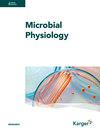Discovery and Characterization of the Phospholemman/SIMP/Viroporin Superfamily.
IF 1.2
4区 生物学
Q2 BIOTECHNOLOGY & APPLIED MICROBIOLOGY
引用次数: 0
Abstract
Using bioinformatic approaches, we present evidence of distant relatedness among the Ephemerovirus Viroporin family, the Rhabdoviridae Putative Viroporin U5 family, the Phospholemman family, and the Small Integral Membrane Protein family. Our approach is based on the transitivity property of homology complemented with five validation criteria: (1) significant sequence similarity and alignment coverage, (2) compatibility of topology of transmembrane segments, (3) overlap of hydropathy profiles, (4) conservation of protein domains, and (5) conservation of sequence motifs. Our results indicate that Pfam protein domains PF02038 and PF15831 can be found in or projected onto members of all four families. In addition, we identified a 26-residue motif conserved across the superfamily. This motif is characterized by hydrophobic residues that help anchor the protein to the membrane and charged residues that constitute phosphorylation sites. In addition, all members of the four families with annotated function are either responsible for or affect the transport of ions into and/or out of the cell. Taken together, these results justify the creation of the novel Phospholemman/SIMP/Viroporin superfamily. Given that transport proteins can be found not just in cells, but also in viruses, the ability to relate viroporin protein families with their eukaryotic and bacterial counterparts is an important development in this superfamily.

磷蛋白/SIMP/病毒蛋白超家族的发现与表征。
利用生物信息学方法,我们提出了蜉蝣病毒毒蛋白家族、横纹肌病毒科推定病毒毒蛋白U5家族、磷蛋白家族和小整合膜蛋白家族之间的远亲关系的证据。我们的方法是基于同源性的传递性,并补充了五个验证标准:(1)显著的序列相似性和比对覆盖率,(2)跨膜段拓扑的兼容性,(3)亲水性谱的重叠,(4)蛋白质结构域的保守性,(5)序列基序的保守性。我们的研究结果表明,Pfam蛋白结构域PF02038和PF15831可以在所有四个家族的成员中找到或投射到Pfam蛋白结构域。此外,我们还发现了一个在整个超家族中保守的26个残基基序。该基序的特点是疏水残基有助于将蛋白质固定在膜上,而带电残基则构成磷酸化位点。此外,具有注释功能的四个家族的所有成员都负责或影响离子进出细胞的运输。综上所述,这些结果证明了创建新的磷蛋白/SIMP/病毒蛋白超家族的合理性。考虑到运输蛋白不仅可以在细胞中发现,也可以在病毒中发现,将病毒孔蛋白家族与其真核和细菌对应物联系起来的能力是这个超家族的一个重要发展。
本文章由计算机程序翻译,如有差异,请以英文原文为准。
求助全文
约1分钟内获得全文
求助全文

 求助内容:
求助内容: 应助结果提醒方式:
应助结果提醒方式:


